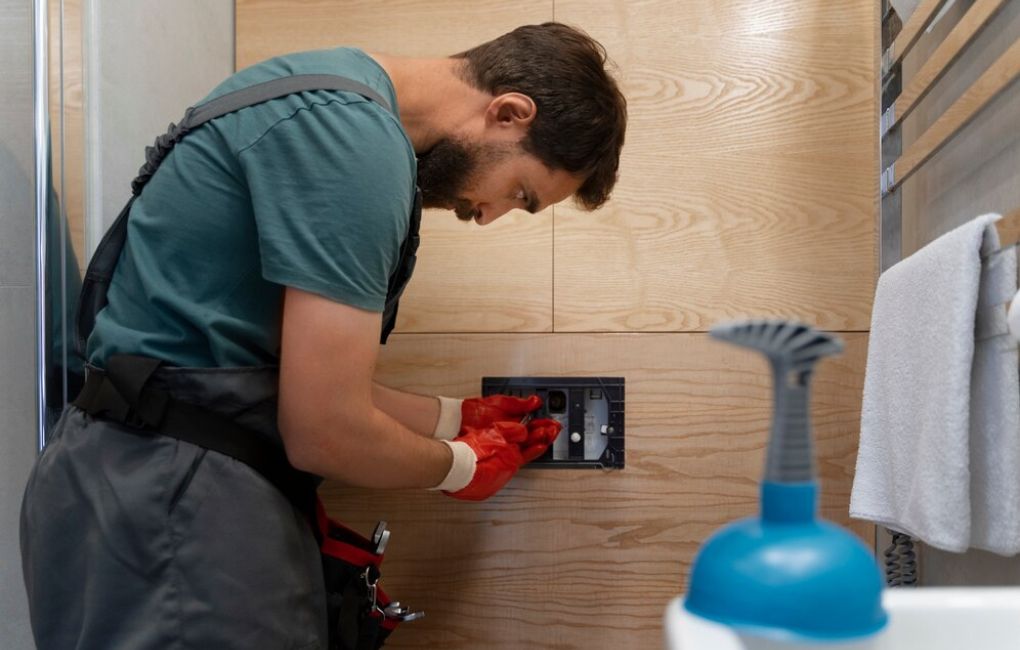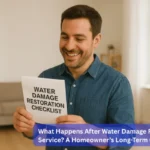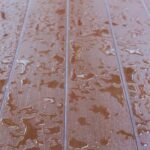Water damage can wreak havoc on homes, causing both aesthetic and structural issues. Whether caused by flooding, sewer problems, or leaks, its effects can be far-reaching and costly to mitigate. Repairing water damage typically involves a combination of professional expertise and do-it-yourself efforts.
While some aspects may require specialized skills and equipment, homeowners can take initial steps to minimize the damage, such as quickly addressing leaks, removing standing water, and drying affected areas thoroughly. Preventive measures like regular maintenance and inspections can help identify and address potential sources of water damage before they escalate.
Ultimately, recognizing the seriousness of water damage and taking proactive steps to address it can save homeowners from significant headaches and expenses in the long run.
Water Damage Destruction to Your Property
Water is essential for life, but it can also be destructive, especially to homes and businesses. It has the power to both sustain life and cause mess. It is important to recognize how water damage can impact various items in your home or business.
Wallboard and Drywall
Porous materials, such as wood, drywall, and fabric, absorb water like a sponge during a flood, becoming fragile and prone to damage. Even after drying out, they can retain contaminants from the floodwater, posing health risks and compromising structural integrity.
Plaster
Thick materials like concrete can withstand water damage to some extent, often not requiring replacement. However, they have a slow drying process, which can prolong the restoration time. If the plaster is severely cracked or warped due to water exposure, replacement becomes necessary to ensure structural integrity and prevent further damage.
Insulation
Foam insulation sheets can typically be saved by rinsing them off and allowing them to dry thoroughly. However, fiberglass batts contaminated with mud should be discarded due to the difficulty of cleaning and the potential for mold growth. Cellulose insulation made of treated paper must be removed and replaced entirely to prevent moisture retention and mold growth.
Solid Wood
Furniture and solid wood items are susceptible to warping and cracking when exposed to floodwater, but they can often be salvaged through thorough drying. Once completely dried, these items typically regain their original shape and structural integrity. However, prompt and effective drying is essential to prevent irreversible damage and mold growth.
Floor Coverings
Carpets and laminate coverings are often unsalvageable after a flood, particularly those with saturated foam rubber backing that can harbor mold and bacteria. Larger carpets usually need to be discarded due to the difficulty of thorough cleaning.
HVAC System
Flooded heater and air conditioner units risk electrical damage and extinguished pilot lights, necessitating cleaning to ensure safe operation. Venting systems exposed to flooding require thorough disassembly and hosing off piece by piece to prevent contaminated air from being circulated throughout the property, mitigating health risks for occupants.
Appliances
During floods or water intrusion events, electrical appliances, and gas lines are prone to short circuits and leaks, potentially releasing harmful and explosive gases into the air. It is imperative to have them thoroughly cleaned and inspected by a professional before using them again.
Pipes and Electrical Wiring
Floods have the potential to dislodge or damage pipes and electrical wiring, which can pose significant safety hazards. It’s crucial to enlist the help of a professional contractor to assess and repair any damage to these essential systems. Unless you have the necessary expertise, attempting repairs yourself could result in further damage or risk of electrical shock or flooding.
Expert Help for Water Damage Repairs
Knowing what steps to take can make a significant difference when you encounter water damage. You will want to start by pinpointing the source and evaluating the situation’s seriousness. From there, using a wet/dry vacuum to tackle standing water is vital, but there are other effective methods you might not have considered.
As you work through the process, understanding the importance of preventing mold growth becomes essential. But what should you do when the damage surpasses your DIY capabilities? Let’s explore the options together.
Assessing Water Damage Severity
When water damage strikes, a precise, methodical evaluation is crucial to determine the extent of the problem. Begin by identifying the source and type of water—clean, gray, or black—as this classification affects health risks and repair strategies. Look for visible signs like discoloration, mold growth, and even subtle structural damage. Note how long the affected area has been wet, as prolonged exposure can worsen the impact. A detailed assessment helps determine if professional remediation is necessary or if you can safely tackle minor repairs yourself.
Handling Minor Repairs
Handling minor water damage promptly can prevent costly repairs and extend the life of your flooring. Follow these simple steps to dry, clean, and restore your surfaces effectively.
- Dry the Area: Position industrial fans and dehumidifiers throughout the space to dry the area effectively. Ensure proper airflow and circulation, removing any residual moisture from walls, floors, and corners for optimal drying.
- Clean Surfaces: Thoroughly clean all surfaces using recommended disinfectants, microfiber cloths, and sponges to eliminate contaminants and prevent mold growth. Scrub all areas to ensure complete sanitation and safety for your space.
- Address Minor Damage: Inspect the affected area for superficial stains or slight warping. Use patching compounds, refinishing kits, or water-resistant sealants to repair imperfections. Follow repair instructions to restore integrity for lasting protection.
- Follow Manufacturer Guidelines: Always adhere to manufacturer guidelines during repairs. Carefully read instructions, use recommended products, and follow safety precautions. This ensures proper repair results and ideal outcomes.
This step-by-step approach minimizes further deterioration and helps extend the life of your flooring or structure.
Preventive Measures and Follow-Up
After completing minor repairs, it’s essential to take preventive measures. Regularly inspect moisture-prone areas and check for early signs of leaks or water intrusion. Ensure proper ventilation and maintain your drainage systems to reduce future risk. Keeping a maintenance log of inspections and repairs can also be invaluable for tracking recurring issues. By combining a detailed assessment, prompt minor maintenance, and proactive prevention, you can effectively manage water damage and safeguard your home against future incidents.
DIY Methods for Water Extraction and Drying
Start tackling water damage by effectively extracting moisture and drying the affected area using proven DIY techniques. Begin using a wet/dry vacuum to remove any standing water, paying attention to corners and crevices. Next, industrial fans and dehumidifiers will be set up to boost airflow and accelerate the drying process. Open windows when weather permits to enhance ventilation, and use a hygrometer to monitor humidity levels to ensure thorough drying. Essential items include:
Wet/Dry Vacuum
A wet/dry vacuum is essential for effective water damage repair. It efficiently removes standing water from floors, carpets, and crevices by suctioning liquid swiftly, preventing further moisture buildup, minimizing mold risks, and facilitating faster drying. This indispensable device is invaluable in restoring water-damaged areas thoroughly and safely.
Industrial Fans
Industrial fans are critical components in water restoration projects. They rapidly circulate air to speed up the drying process in water-damaged areas. They also reduce humidity levels, prevent mold growth, and enhance overall ventilation. Their robust design ensures efficient airflow even in large spaces, contributing significantly to effective water extraction and restoration.
Dehumidifiers
Dehumidifiers are essential in water repair. They extract excess moisture from the air to lower humidity and expedite the drying process. By maintaining optimal moisture levels in affected areas, they help prevent mold growth and structural damage. Their operation is vital in creating a safer, more comfortable environment after water exposure.
Hygrometer
A hygrometer is indispensable in liquid damage recovery, accurately measuring ambient humidity levels. Monitoring moisture content helps determine when drying processes are complete, ensuring adequate water extraction and preventing mold growth. Its precise readings guide restoration efforts and maintain optimal indoor conditions in water-damaged areas, ensuring accuracy.
Extension Cords
Extension cords are vital during water repair projects, providing power to drying equipment such as fans and dehumidifiers. They enable flexible placement of devices in hard-to-reach areas, ensuring continuous operation. Quality extension cords maintain safety standards, support heavy-duty use, and provide reliable energy supply during water extraction and restoration.
These steps aid in wet damage repair and reduce the need for extensive professional water restoration services in minor cases.
Preventing Mold Growth After Water Damage
Preventing mold growth after water damage requires prompt action and careful attention. Start by drying the affected area within 24-48 hours to minimize moisture buildup that promotes mold. Use industrial fans and dehumidifiers to reduce humidity levels and remove water-damaged materials like carpets, drywall, or insulation. Clean and disinfect surfaces with a mixture of water and vinegar or another approved cleaning solution. Essential items include:
Industrial Fans
Industrial fans are essential during water repair efforts because they rapidly circulate air, effectively reducing moisture concentration and lowering the risk of mold development. Dehumidifiers
Dehumidifiers play a critical role during water damage repair by extracting excess moisture from the air, effectively lowering indoor humidity.
Cleaning Solutions (Water and Vinegar)
A mixture of water and vinegar is an effective cleaning solution. It disinfects surfaces by eliminating moisture-loving spores and bacteria.
Protective Gloves and Masks
Wearing protective gloves and masks is essential during water cleanup and restoration. They prevent direct contact with contaminants and reduce health risks from mold spores and airborne particles.
Inspections
Regular inspections help prevent mold from developing. While DIY efforts are effective, severe cases may require professional water restoration services to mitigate mold risk fully. Follow-up inspections and checks can help ensure nothing is overlooked or missed during the initial remediation process.
When to Call a Professional for Water Damage Repair
A significant amount of water damage can overwhelm your DIY repair efforts, making it vital to recognize when it is time to call in the professionals. If you notice structural issues, persistent moisture, or extensive mold growth, do not hesitate to reach out for help. Additionally, if the damage affects electrical systems or plumbing, it’s essential to consult experts to guarantee safety and proper restoration.
Final Thoughts
Tackling water damage on your own might feel overwhelming, but with the right steps, you can take control and protect your home. By assessing the damage quickly, removing standing water, and preventing mold, you can save thousands in repairs and preserve your property’s value. However, not all damage is visible — and when in doubt, it’s best to trust the experts in water damage restoration. If you’re facing extensive damage, don’t wait. Call SS Water Restoration today for fast, reliable service from certified professionals. Your peace of mind is just one call away.
FAQs:
1. What is the first thing I should do after discovering water damage?
2. Can I repair water-damaged drywall myself?
3. How do I know if water damage is serious enough to call a professional?
4. How can I prevent mold after water damage?
5. What tools do I need for DIY water damage repair?









